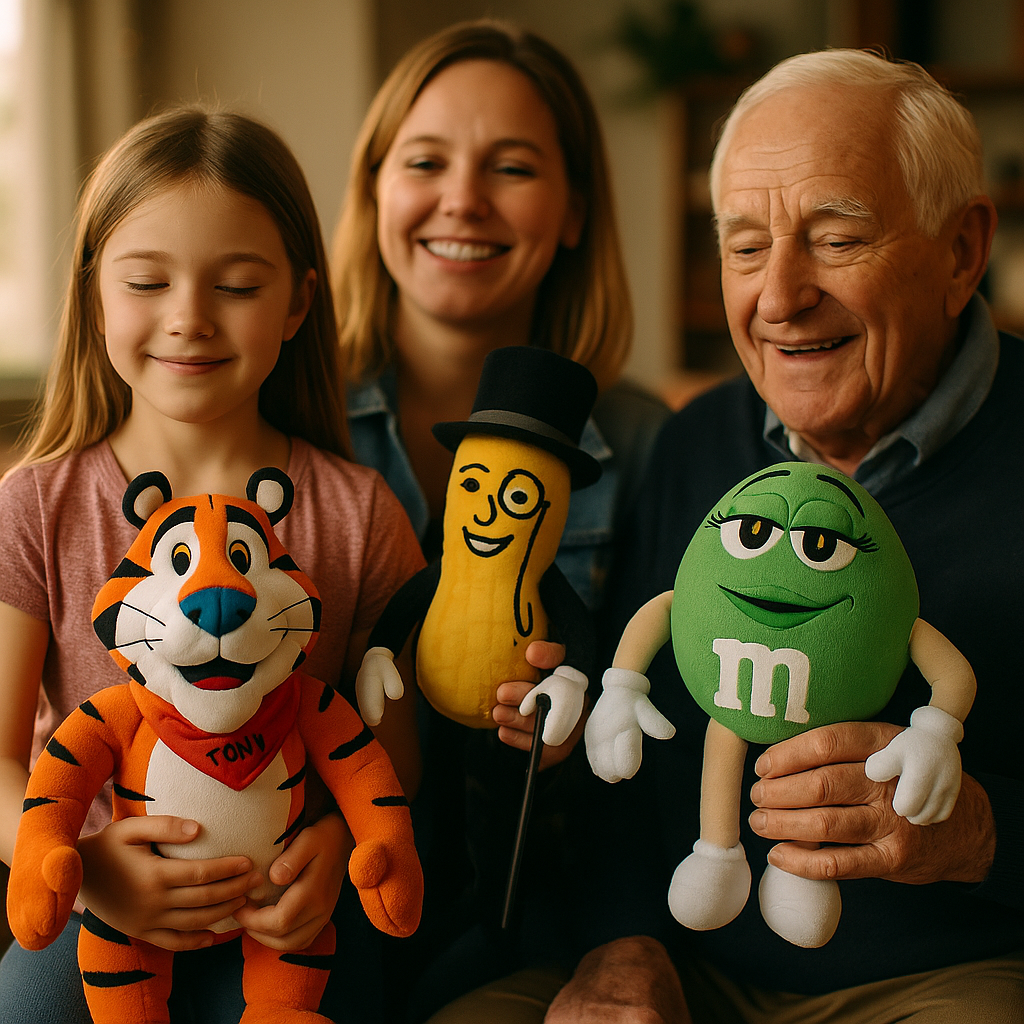How can brands achieve cross-generational appeal in a saturated market? In this case study, we uncover how a popular brand mascot became the secret ingredient for connecting with millennials, Gen Z, and even boomers. Discover practical lessons, expert insights, and actionable strategies for building timeless, emotionally-resonant brand identity—using a lovable mascot as the bridge across age groups.
Brand Mascots and Cross-Generational Engagement
Brand mascots have long been a staple in marketing, but their role has evolved. Today, they’re more than just cartoon faces; they’re vehicles for storytelling and emotional connection. A 2024 Brand Storytelling Survey found that 67% of consumers feel more loyal to brands with relatable mascots. This statistic highlights the power of a mascot in fostering meaningful connections across generations. In the digital era, a mascot’s personality—animated on social media and embedded in campaigns—invites engagement and co-creation, key factors in nurturing a loyal, multi-generational consumer base.
The Strategy: Reinventing a Classic Mascot for Modern Audiences
When a heritage snack brand noticed declining relevance among younger demographics, they didn’t abandon their iconic mascot. Instead, they reimagined it for 2025. The company preserved the mascot’s core design, yet updated its style, values, and language to better align with contemporary sensibilities. They adopted a multi-channel approach, including:
- Animated web series featuring themes relevant to Gen Z and millennials, such as sustainability and inclusivity
- Nostalgia-driven ad campaigns targeting Gen X and boomers on traditional media
- Interactive AR experiences that let users “meet” the mascot on their phones
- Collaborations with influencers across diverse age brackets
This adaptive strategy ensured the mascot remained recognizable, yet felt fresh and authentic to each generation.
Social Media: Authentic Storytelling Across Generations
Harnessing social media was key to giving the brand mascot a voice beyond product packaging. The brand developed short, humorous videos for platforms like TikTok and Instagram Reels—channels dominated by younger audiences. For older consumers, stories featuring the mascot’s “retro adventures” were published on Facebook and YouTube. User-generated content campaigns encouraged consumers to share childhood memories or new experiences with the mascot, reinforcing a sense of collective nostalgia and relevance.
The result? A 2025 consumer trends report from SocialGraph shows brands with active mascot personas on social media see a 35% higher cross-generational engagement rate. This amplification demonstrates the mascot’s flexibility as a storytelling device, seamlessly adapting its tone and message for different age groups, while maintaining brand consistency.
Design Evolution: Staying Relatable Without Losing Originality
Visual representation matters. When updating the mascot, the brand worked closely with creative experts and consumer focus groups from ages 16 to 65. Key findings informed each change:
- Younger consumers wanted eco-friendly imagery and memes
- Older generations valued the mascot’s original palette and playful charm
The redesign struck a balance: modernized color schemes, subtle expressions of current values (like recycling badges), and retro callbacks kept both new and existing fans invested. Consistency across touchpoints—whether a digital sticker or billboard—reinforced positive brand recognition. This consultative approach improved acceptance rates and generated buzz around the mascot’s “evolution party,” which trended online for over a week.
Measuring Success: Insights from Performance Data
Effective brand mascot campaigns are grounded in data. The brand established clear KPIs to measure cross-generational appeal, such as:
- Social media engagement (shares, comments, and platform-specific metrics segmented by age group)
- Customer feedback surveys asking about mascot recognition and relatability
- Sales data before and after mascot relaunch
- Branded hashtag usage across age-defined audience clusters
Results from 2025 painted a compelling picture. Mascot recognition surged to 92% among millennials and 87% among Gen Z, while positive sentiment scores from Gen X and boomers increased by 41%. Sales of the mascot-themed product lines outperformed projections by 23%. The brand’s cross-generational mascot campaign proved both measurable and meaningful—validating a thoughtfully executed, data-driven approach.
Key Takeaways and Best Practices for EEAT-Driven Success
How can other brands replicate this cross-generational triumph? Google’s EEAT framework—Expertise, Experience, Authoritativeness, and Trustworthiness—guides modern content strategy. This brand demonstrated:
- Expertise: In-depth consumer research informed mascot redesigns and campaign messages
- Experience: Decades of mascot history fostered authenticity
- Authoritativeness: Partnerships with trusted influencers and creative agencies
- Trustworthiness: Transparent communication about mascot changes and purposeful engagement with diverse audiences
Brands focusing on these pillars can create mascots that resonate, adapt, and endure—bridging generational divides with imagination and integrity.
Frequently Asked Questions: Brand Mascots for Cross-Generational Appeal
-
Why are mascots effective for cross-generational marketing?
Mascots simplify brand messaging, evoke emotions, and create sustained engagement. Their adaptability allows brands to address different age groups without fragmenting their identity. -
How should a brand update a mascot without alienating existing fans?
Respect core design traits, involve consumer feedback from all age groups, and gradually introduce new elements that reflect current values and trends. -
What metrics can track a mascot’s cross-generational impact?
Monitor social engagement by age group, consumer sentiment surveys, mascot recognition stats, and product sales tied to mascot-centric campaigns. -
Can a mascot become outdated? How often should a brand update it?
Yes. Reassess every 3-5 years or when shifting market trends, ensuring updates are based on data and consumer research rather than fleeting design fads.
In 2025, this case study shows that a thoughtfully adapted brand mascot can serve as a powerful connector, bridging generational preferences and driving loyalty. Brands that invest in strategic, authentic mascot evolution will continue to thrive across all age demographics.
